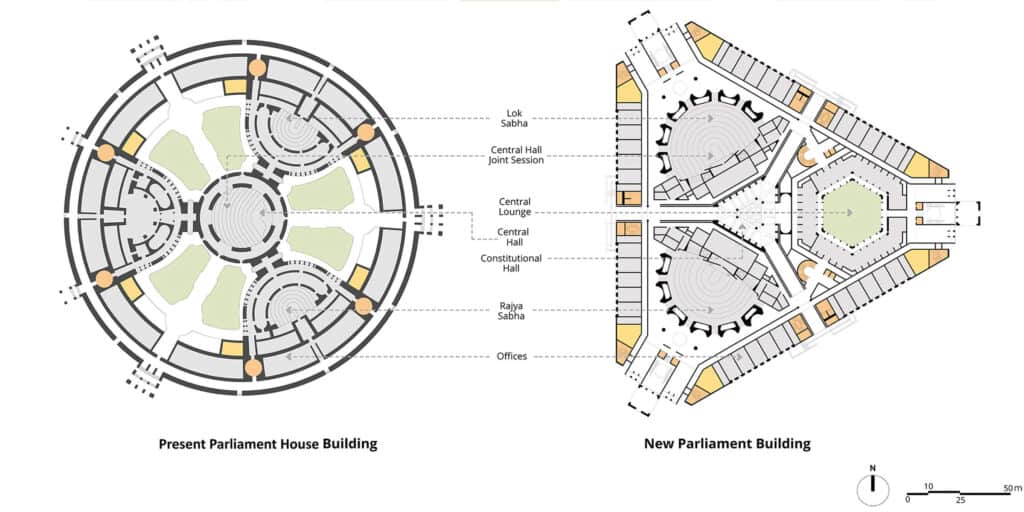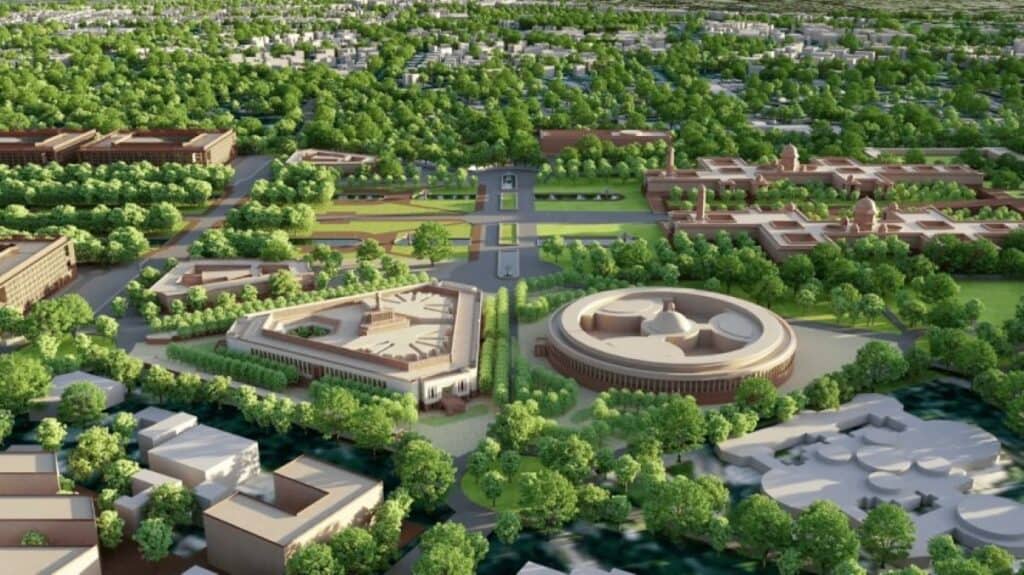Prime Minister Narendra Modi is all set to inaugurate India’s new Parliament house on Sunday i.e., May 28. Built at a cost of 971 crores, this grand structure is not only a symbol of the country’s progress but also a reflection of the aspirations of its 1.35 billion people.
The new Parliament House has several notable features. One of the highlights is the exquisite artwork that adorns the walls, creating an aesthetic ambience that pays tribute to the rich cultural heritage of India. Adding to the grandeur, the building will also house a ceremonial sceptre called ‘Sengol’, adding a touch of royalty to the proceedings.

In terms of design, the new complex adopts a unique triangular shape, ensuring optimum use of space. The project’s website states that this innovative layout was carefully planned to accommodate the evolving needs of the legislative process.
Let’s delve into some of the key features of this splendid new Parliament building. First and foremost, the legislative chambers have been expanded to provide more seating capacity. The Lok Sabha, inspired by the peacock, India’s national bird, will now accommodate 888 seats, three times its previous capacity. Similarly, the Rajya Sabha, drawing inspiration from the lotus, the national flower, will have 348 seats. Moreover, for joint sessions, the Lok Sabha hall can accommodate up to 1,272 seats, fostering collaborative decision-making.


In addition to the legislative chambers, the new complex features a ‘Constitutional Hall’ at its centre, a symbolic representation of the citizens at the heart of a democracy. The outer part of the building will house offices, while the central joint session from the old complex will form part of the Lok Sabha hall in the new setup.
Modernity and efficiency have also been given priority in the new Parliament House. The offices are designed with the latest communication technologies, ensuring secure and efficient operations. State-of-the-art committee rooms equipped with advanced technology facilitate smooth functioning and productivity. Furthermore, a thoughtfully designed library provides members with easy access to relevant information, thereby enhancing their work experience.
Notably, sustainability has been a key focus during the construction of the new complex. It has achieved the prestigious “platinum-rated green building” certification, showcasing India’s commitment to sustainable development. Additionally, the building will proudly display regional artworks, celebrating the country’s diverse cultural heritage.
To ensure inclusivity, the new Parliament complex has been designed to be ‘divyang-friendly,’ accommodating the needs of people with disabilities. The central lounge serves as a space for members to interact and collaborate, while the open courtyard features the national tree, the majestic Banyan, adding a touch of serenity to the surroundings.
As Prime Minister Narendra Modi unveils the New Parliament House, it serves as an embodiment of India’s advancement, embodying the shared dreams and ambitions of its people. Boasting remarkable attributes, distinct architecture, and a strong dedication to sustainability and inclusivity, this magnificent edifice signals a fresh chapter in India’s democratic journey.
